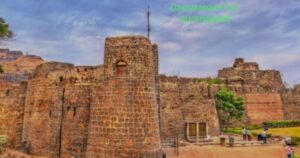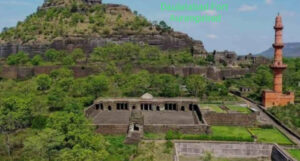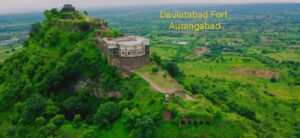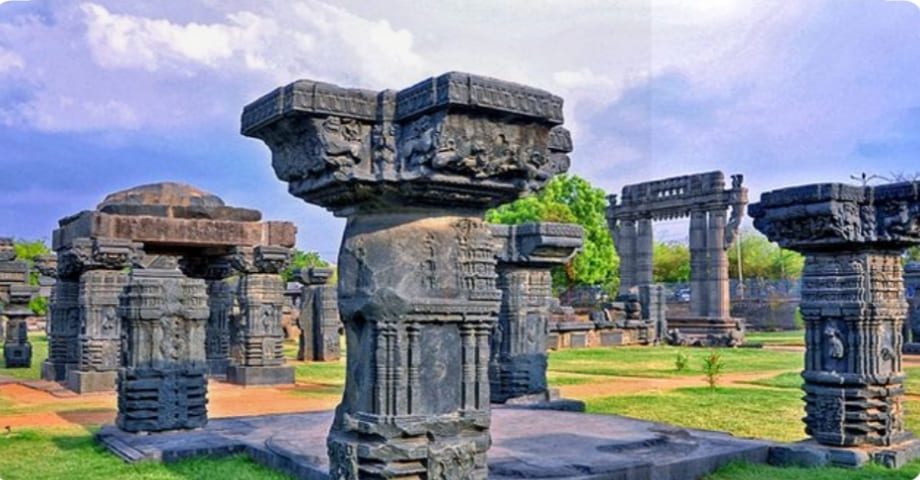fort is open to visitorsPerched atop a rugged hill in the heart of Maharashtra, Daulatabad Fort Aurangabad, stands as a testament to the architectural brilliance and strategic genius of medieval India. Once known as Devagiri, this imposing fortress has witnessed the rise and fall of empires, the shifting sands of power, and the ebb and flow of history. Situated just 16 kilometers from Aurangabad, Daulatabad Fort is not just a marvel of military architecture but also a symbol of resilience and ingenuity. In this blog post, we will delve deep into the history, destination for history architecture, and significance of Daulatabad Fort, exploring why it remains a must-visit destination for history enthusiasts and curious travelers alike.

1. Historical Background of Daulatabad Fort Aurangabad
Daulatabad Fort’s origins trace back to the 12th century when it was established by the Yadava dynasty as Devagiri. The Yadavas, a powerful dynasty of the Deccan region, chose the site for its strategic location, making it a formidable stronghold against invasions. The fort’s initial design and construction reflected the need for robust defenses, which would later be enhanced by successive rulers.
The fort gained immense historical importance during the reign of Sultan Muhammad bin Tughlaq in the 14th century. In a bold and somewhat controversial move, Tughlaq decided to shift his capital from Delhi to Devagiri, renaming it Daulatabad, meaning “City of Prosperity.” This relocation was part of his ambitious plan to establish a more centralized and secure capital. However, the move proved to be disastrous due to logistical challenges and harsh climatic conditions, leading Tughlaq to eventually abandon the idea and return to Delhi. Despite this, the name Daulatabad persisted, and the fort continued to hold strategic significance in the centuries that followed.
Over time, Daulatabad Fort came under the control of various dynasties, including the Bahmani Sultanate, the Mughals, and finally, the Nizams of Hyderabad. Each ruler left their mark on the fort, contributing to its architectural and cultural legacy.
2. Architectural Marvels of Daulatabad Fort Aurangabad
Daulatabad Fort is a masterpiece of medieval military architecture, designed to be nearly impregnable. Its construction on a conical hill, with steep sides and a flat summit, provided natural defenses against invaders. The fort’s design includes a series of elaborate fortifications, gateways, and passages, all aimed at thwarting enemy advances.
One of the most striking features of the fort is its imposing entrance, which is a marvel of engineering. The main entrance, known as the “Kala Darwaza,” is fortified with iron spikes to deter war elephants, a common tactic used in medieval sieges. The entrance is also designed in a zigzag pattern, preventing a direct assault and making it difficult for enemies to breach the gates.
The fort’s defensive features are unparalleled. The moat surrounding the fort is deep and filled with crocodiles in the past, adding an additional layer of defense. The drawbridge leading to the main entrance could be retracted to cut off access. Once inside, the fort’s narrow and steep passages, with sharp turns and blind spots, would slow down any advancing army, giving the defenders a significant advantage.
Among the architectural highlights is the Chand Minar, a 30 meter-high tower built by Ala-ud-din Bahmani to commemorate his conquest of the fort. The tower, painted in red and cream stripes, stands as a symbol of victory and is one of the most recognizable features of Daulatabad Fort.
The fort also contains a complex network of underground passageways, designed to provide a secure means of communication and escape during sieges. These tunnels, some of which remain unexplored, add to the fort’s aura of mystery and intrigue.

3. Strategic Importance of Daulatabad Fort
The strategic location of Daulatabad Fort made it a highly coveted military asset. Situated at the crossroads of major trade routes in the Deccan, the fort served as a key point of control for any ruler seeking dominance in the region. Its position on a hill provided natural defenses, while the surrounding landscape made it difficult for enemies to launch a sustained attack
Throughout its history, Daulatabad Fort played a pivotal role in the power struggles of the Deccan region. Its formidable defenses and strategic location made it a bastion of strength for the various dynasties that controlled it. The fort was often at the center of conflicts between the northern and southern kingdoms, serving as a critical outpost in the defense of the Deccan.
The fort’s military significance extended beyond its defensive capabilities. It also served as a base for launching military campaigns in the surrounding regions. Its extensive fortifications and secure location made it an ideal headquarters for armies preparing for battle
4. Myths and Legends Surrounding Daulatabad For
Daulatabad Fort is steeped in myths and legends, adding an element of mystique to its already fascinating history. One of the most intriguing tales is that of the fort’s mysterious well, known as the “Hathi Haud.” Local legends suggest that this well is connected to a network of secret tunnels that lead to various parts of the fort, providing a hidden escape route during sieges. Although these tunnels have never been fully explored, they continue to capture the imagination of visitors.
Another popular legend is the belief that the fort is haunted by the spirits of soldiers who died defending it. Over the years, there have been numerous reports of paranormal activity, with visitors claiming to have heard strange noises and seen apparitions within the fort’s walls. These ghost stories, though unverified, add an eerie charm to the fort and draw curious travelers eager to experience the supernatural.
5. Visiting Daulatabad Fort Today
Today, Daulatabad Fort is a popular tourist destination, attracting history buffs, architecture enthusiasts, and adventure seekers alike. The fort is open to visitors throughout the year, with the best time to visit being during the cooler months from October to March. The fort’s entry fee is nominal, making it an affordable destination for all.
When visiting Daulatabad Fort, there are several must-see spots within the complex. The Chand Minar, with its stunning architecture, offers a glimpse into the fort’s glorious past. The royal palaces, though in ruins, provide insight into the luxurious lifestyle of the rulers who once inhabited the fort. The underground passageways, though not fully accessible, are worth exploring for those who are adventurous.
In addition to the fort itself, visitors can also explore nearby attractions such as the Ellora Caves, a UNESCO World Heritage Site, and Bibi Ka Maqbara, often referred to as the “Taj of the Deccan.” These sites, along with Daulatabad Fort, offer a comprehensive glimpse into the rich cultural and historical heritage of the region.

6. Preservation and Challenges
Despite its historical significance, Daulatabad Fort faces several challenges in terms of preservation. The fort’s age and exposure to the elements have taken a toll on its structures, leading to wear and tear. In recent years, efforts have been made to restore and preserve the fort, but these efforts are often hampered by a lack of funding and resources
Environmental factors, such as heavy monsoons and fluctuating temperatures, have also contributed to the deterioration of the fort’s buildings. Additionally, human activities, including vandalism and littering, pose a significant threat to the fort’s preservation.
There is a growing need for increased awareness and stronger conservation efforts to protect Daulatabad Fort for future generations. Collaborative efforts between government bodies, historians, and local communities are essential to ensuring the fort’s survival and continued relevance as a historical landmark.
Conclusion:
Daulatabad Fort is more than just a historical monument; it is a symbol of India’s rich cultural heritage and architectural prowess. From its origins as Devagiri to its transformation into Daulatabad, the fort has stood the test of time, bearing witness to the rise and fall of empires. Its strategic location, formidable defenses, and architectural brilliance make it a must-visit destination for anyone interested in history and architecture.
As we explore the mysteries and marvels of Daulatabad Fort, we are reminded of the importance of preserving such historical sites for future generations. By visiting the fort and supporting conservation efforts, we can ensure that this magnificent fortress continues to inspire awe and wonder for years to come.
FAQ:
1.Daulatabad fort aurangabad wikipedia
2.Daulatabad fort aurangabad history
3.Daulatabad fort aurangabad timings
4.daulatabad fort, aurangabad information in english
5.Daulatabad Fort to Aurangabad distance
6.Daulatabad in which state
7.Daulatabad fort aurangabad opening time
8.Daulatabad Fort photos
9.Daulatabad Fort was built by
10.Daulatabad Fort information in English 10 lines
11.Where is daulatabad located in india map
12.Daulatabad fort aurangabad entry fee

